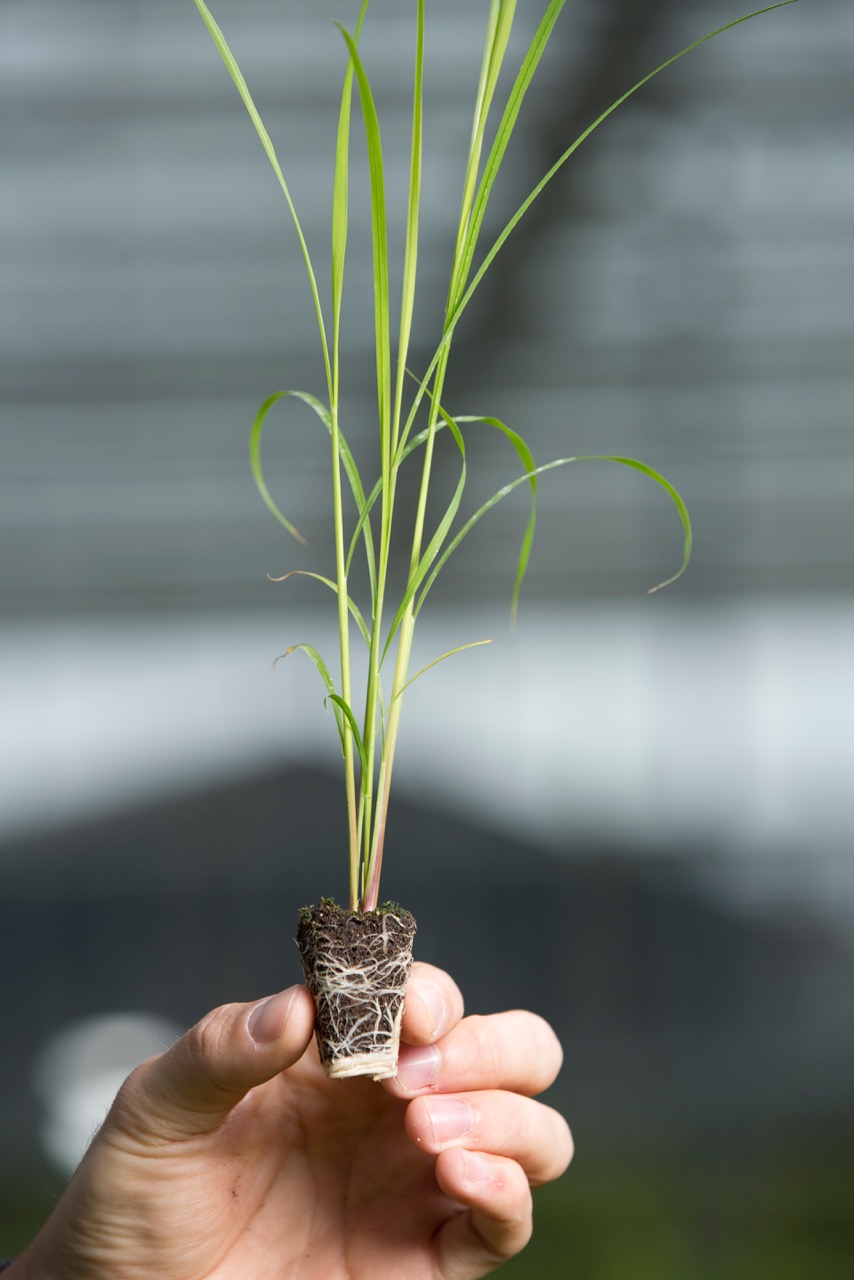MISCOMAR
Miscanthus biomass options for contaminated and marginal land: quality, quantity and soil interactions
BACKGROUND
Bioenergy is a key element of the EU renewable strategy and exists at the interface of policies on agriculture/land use and energy generation. Currently the majority of biofuels are produced from annual food crops grown on agricultural land, whereas the majority of solid biomass used for heat and power is woody and comes from forests. To avoid tension between food and fuel production, changes to the current approach are proposed by the European Commission to grow perennial energy crops on medium or low quality agricultural land wherever possible.
OBJECTIVE
- investigate the field performance of novel, stress tolerant miscanthus seed-based hybrids in comparison to the standard geno-type Miscanthus x giganteus on economically marginal and heavy metal contaminated (HMC) soils;
- quantify the impacts of miscanthus production on soil parameters;
- identify utilisation options for biomass and study the impact of varying environmental conditions on potential miscanthus end uses;
- develop concepts for the integration of miscanthus into existing crop rotations and farming systems.
METHODOLOGY
- Investigation of the production potential (quantity and quality) of promising near-to-market Miscanthus seed-based hybrids on marginal land;
- The hybrids originate from IBERS’ breeding program and are grown on HM contaminated land (Poland), marginal arable land (Germany) and as reference on arable land in the UK;
- Comparison of biomass from seed-based hybrids at each location to standard M. x giganteus commercial clone
RESULTS AND KEY FINDINGS
- Optimal systems for "Miscanthus genotype x site x crop management" combinations for biomass production under marginal conditions;
- Utilisation options for biomass from novel Miscanthus hybrids including anaerobic digestion (as an alternative for HMC bio-mass), combustion as well as other uses e.g. for building materials;
- Concepts for integrating miscanthus into agricultural practice on farm level, which was analysed by the economic outcome for the three utilization options "combustion", "anaerobic digestion" and "anmial bedding".
- Policy-relevant data on the balance between food/fuel production, with a particular focus on the scope for optimisation of land-use in contaminated and marginal areas.
KEY PUBLICATIONS
John Clifton-Brown et al - "Progress in upscaling Miscanthus biomass production for the European bio-economy with seed-based hybrids" - GCB Bioenergy (2017) 9, 6–17, doi: 10.1111/gcbb.12357 - [PDF]
Jacek Krzyżak et al - "Heavy Metal Uptake by Novel Miscanthus Seed-Based Hybrids Cultivated in Heavy Metal Contaminated Soil" - CEER 2017; 26 (3): 121-132 DOI: 10.1515/ceer-2017-0040 - [PDF]
Anja Mangold et al - "‘Collar propagation’ as an alternative propagation method for rhizomatous miscanthus" - GCB Bioenergy (2018) 10, 186–198, DOI: 10.1111/gcbb.12480 - [PDF]
John Clifton‐Brown et al - "Breeding progress and preparedness for mass‐scale deployment of perennial lignocellulosic biomass crops switchgrass,miscanthus, willow and poplar" - GCB Bioenergy. 2019;11:118–151 DOI: 10.1111/gcbb.12566 - [PDF]
Amanda J. Holder et al - "Measured and modelled effect of land-use change from temperate grassland to Miscanthus on soil carbon stocks after 12 years" - GCB Bioenergy. 2019;11:1173–1186 DOI: 10.1111/gcbb.12624 - [PDF]
Anja Mangold et al - "Miscanthus for biogas production: Influence of harvest date and ensiling on digestibility and methane hectare yield" - GCB Bioenergy. 2019;11:50–62. DOI: 10.1111/gcbb.12584 - [PDF]
Anja Mangold et al - "Harvest date and leaf:stem ratio determine methane hectare yield of miscanthus biomass" - GCB Bioenergy. 2019;11:21–33. DOI: 10.1111/gcbb.12549 - [PDF]
Szymon Rusinowski et al - "New Miscanthus hybrids cultivated at a Polish metal-contaminated site demonstrate high stomatal regulation and reduced shoot Pb and Cd concentrations" - Environmental Pollution, Volume 250, 2019, pp. 300-311 https://doi.org/10.1016/j.envpol.2019.06.062 - [PDF]
Moritz Wagner et al - "Economic and environmental performance of miscanthus cultivated on marginal land for biogas production" - GCB Bioenergy. 2019;11:34–49. DOI: 10.1111/gcbb.12567 - [PDF]


Coordinator
Dr. Marta Pogrzeba
Institute for Ecology of Industrial Areas, Poland
Email: m.pogrzeba@ietu.pl
Project partners
University of Hohenheim, Germany
Aberystwyth University, United Kingdom
Total funding: 575.000 €
MISCOMAR Newsletter
EUBCE Presentations
- Can marginal lands help to secure the biomass demand of the european bioeconomy? Performance of miscanthus on contaminated arable land introduction
Presentation, EUBCE 2018 - Economic and environmental advantages of Miscanthus cultivation on marginal lands – lessons learnt from the MISCOMAR project
Presentation, EUBCE 2019